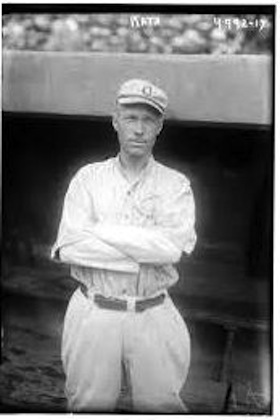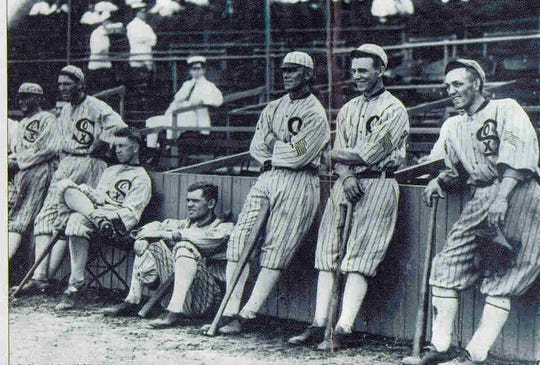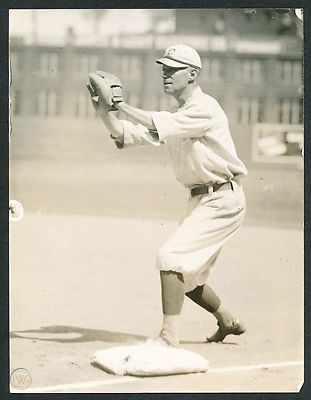Tagged: Rainiers
Reaching Your Goal
Are you part of the nearly half of New Year’s Resolutioners that have given up? Or are you one of the less than 10% who will be successful? Life is hard, keep working towards your dreams. Ron Wright never gave up. He fought for what he wanted. All of his hard work eventually paid off.
Ron Wright was selected in the 7th Round of the 1994 MLB Draft by the Atlanta Braves from Kamiakin High School in Kennewick, Washington. He played two and a half seasons in the Braves minor league system. Wright spent 1994 with the Rookie Level Gulf Coast League Braves, 1995 with the Single A Macon Braves, and 1996 with the High A Durham Bulls and Double A Greenville Braves before an August trade to the Pittsburgh Pirates. Wright now set his sights on the Steel City. He finished 1996 with the Double A Carolina Mudcats and spent 1997 with the Triple A Calgary Cannons. 1998 was a lost season as Wright appeared in only 20 Games, 17 with the Triple A Nashville Sounds and 3 with the Rookie Level Gulf Coast League Pirates. 1999 was equally frustrating, playing only 24 Games for the Double A Altoona Curve. In October, the Cincinnati Reds selected Wright off waivers. His aim moved further down the Ohio River. Wright spent 2000 with the Double A Chattanooga Lookouts and Triple A Louisville RiverBats. In November, Wright signed as a Minor League free agent with the Tampa Bay Devil Rays. He spent the season back with the Durham Bulls, now a Triple A team. Again a Minor League free agent, Wright signed with the Seattle Mariners for the 2002 season. He began the season with the Triple A Tacoma Rainiers. Ron Wright had played eight Minor League seasons with 12 different teams.
Heading into the 2002 season Wright had played in 666 Minor League games. He hit .261 with 121 Home Runs, 453 RBI, and 361 Runs scored in 2,729 Plate Appearances. Wright had played at every level, Rookie Ball to Triple A. He fought through injuries and the ups and downs of professional baseball. Wright remained one step away from the Majors. The trip from Cheney Stadium to Safeco Field is only 35 miles, but Wright kept fighting to make that drive.
The bad news in Seattle was future Hall of Fame Edgar Martinez was hurt running to First. Martinez’s injury put a damper on the Mariners early season success. Edgar’s injury was bad news for everyone except Minor League journeyman Ron Wright. He finally got the call to the Big Leagues. The years of toil had paid off. He was heading to the show.
It was a pleasant afternoon in Arlington, Texas. It was 76℉ and overcast. Ron Wright had made it to the Majors on Sunday, April 14, 2002. The Mariners were on the road, playing the Rangers at The Ballpark in Arlington. 32,866 fans watched as Seattle’s John Halama faced off against Texas’ Kenny Rogers. Ron Wright was the DH, batting 7th for the Mariners. All was right in the world.
In the Top of the 2nd, Ron Wright strolled to the plate. This was the moment he had worked so hard for, his first Major League At Bat. Ruben Sierra was standing on Second after a lead off Single and a John Olerud Walk. Wright stepped in the Right Handed Batters Box looking to add to the Mariners 1-0 lead. Kenny Rogers rocked and fired. In the blink of an eye, Wright was walking back to the dugout. Striking out looking on three pitches was not how Wright envisioned his first At Bat in the Big Leagues, but he had stamped his name in the record books as playing in a Major League game. There would be more chances.
The next opportunity for Wright came in the Top of the 4th. Seattle still clung to its 1-0 lead, and Wright could extend the lead. He again came up with Sierra and Olerud on base. Sierra led off with a Double and moved to Third on Olerud’s Single. Wright worked the count to 2-2. On the fifth pitch he swung. The ball bounced to Rogers on the mound who fired to Alex Rodriguez coming over from Shortstop to cover Second for the first Out. Rodriguez then threw home to Catcher Bill Haselman who chased Sierra back towards Third. He tossed the ball to Third Baseman Hank Blalock who chased Sierra back towards Home. Blalock tossed the ball to Rogers who tagged Sierra for the second Out. During the rundown Wright reached First and was advancing towards Second. He was never known for his speed, just nine Stolen Bases in the Minors. After tagging Sierra, Rogers threw to Second Baseman Michael Young who tagged Wright coming into Second for the third Out. The 1-6-2-5-1-4 Triple Play killed the rally, and made Wright’s debut memorable for all the wrong reasons.
Baseball is about dealing with failure. There are few failures like hitting into a Triple Play. Baseball does not give you long to dwell on your failures. In the Top of the 6th, Wright came up for the third time. He was patient in his first two At Bats, but not this time. The Mariners were trailing 2-1. Again Ruben Sierra was on Second and John Olerud on First. On the first pitch from Rogers, Wright hit the ball to Shortstop Alex Rodriguez to start a Double Play. Sierra moved to Third, but the rally was dead. The frustrating day continued.
Ron Wright never got that fourth At Bat. Manager Lou Piniella sent up Pinch Hitter Mark McLemore in the 7th Inning. His Major League debut was complete. Wright had three At Bats against Kenny Rogers. He saw nine pitches. Made six Outs. The Mariners won 9-7. The game took 3 hours and 39 minutes. Before the Mariners returned to the field on Monday Ron Wright was back in the Minors. He never returned to the Majors. Wright’s Major League career took less time than it takes to watch Gone With The Wind.
Was it worth it? Despite one of the worst possible debuts, Ron Wright can proudly say he was a Major League Baseball player. Only 18,039 players before him earned that title. While his career was not what he hoped, Wright made it to the top. He kept grinding. He kept going. The baseball gods rewarded his lifetime of work with one of the strangest days ever on a baseball field. Keep working towards your goals.
DJ
The Fix Is In
Eddie Cicotte takes the sign from Ray Schalk, winds and fires. OUCH! Cicotte drills the first Cincinnati Red, signaling the Chicago White Sox will throw the 1919 World Series. Baseball fans know what happened next. Eight White Sox players were accused, brought to trial, found not guilty, and then banned by new Baseball Commissioner Kenesaw Mountain Landis. Chick Gandil, Eddie Cicotte, Happy Felsch, Shoeless Joe Jackson, Fred McMullin, Swede Risberg, Buck Weaver, and Lefty Williams were placed on the ineligible list, where they have remained ever since.
The Black Sox scandal overshadowed the 1919 World Series. The Reds were largely ignored. So too was Cincinnati Second Baseman Morrie Rath who received the painful signal. Rath played for four teams in six seasons between stents in the Minors from 1909 to 1920. Connie Mack bought Rath from the Reading Pretzels of the Tri-State League on August 21, 1909. A month later, Rath went hitless in his Major League debut against the Cleveland Naps. On July 23, 1910, after playing just 18 games for Philadelphia, Rath and a Player To Be Named Later, Shoeless Joe Jackson, were traded to Cleveland for Bris Lord. Rath played 24 games for the Naps before his demotion to the Baltimore Orioles of the Eastern League. He stayed in Baltimore through the 1911 season, when the White Sox selected him in the Rule 5 Draft. He played 249 Games for Chicago before he was sold to the Kansas City Blues of the American Association in August 1913. He was again traded to the Salt Lake City Bees for Dutch Ruether in November 1915. The Cincinnati Reds selected Rath in the 1917 Rule 5 Draft. He finally joined the Cincinnati Reds in 1919 after spending 1918 in the Navy.
Morrie Rath was the recipient of the most famous Hit By Pitch in baseball history. (www.sabr.com)
Rath played 565 Games for the Philadelphia Athletics, Cleveland Naps, Chicago White Sox, and Cincinnati Reds. He posted a career .254 BA, .342 OBP, .285 SLG, 521 Hits, 36 Doubles, 7 Triples, 4 Home Runs, 92 RBI, 291 Runs scored, 83 Stolen Bases, 258 Walks, 112 Strike Outs, and 14 Hit By Pitch. Defensively, Rath was a good, not great, Second Baseman. In 4,518 Innings he had 2,817 Chances, made 1,167 Putouts, 1,565 Assists, turned 200 Double Plays, 85 Errors, for a .970 Fielding %. Baseball history is littered with players like Rath. Playing for multiple teams with a few successful seasons, before fading into history.
October 1, 1919 was Rath’s most memorable game. The Reds hosted the heavily favored White Sox at Redland Field in Game 1 of the World Series. Reds Manager Pat Moran inserted Rath in the leadoff spot against Eddie Cicotte, who was 29-7 with a 1.82 ERA in the Regular Season. Rath waited as Cicotte fired his first pitch. SMACK! Rath trotted to First. Jake Daubert followed, singling to Right Center, Rath took third. Heinie Groh then flew out to Left, allowing Rath to score. 1-0 Reds.
The Black Sox lost the 1919 World Series and were then banned from baseball. (www.worthpoint.com)
Reds pitcher Duth Ruether allowed an unearned run in the Second. Cicotte walked Ruether to lead off the Bottom of the Third. Rath dropped a sacrifice bunt to Cicotte moving Ruether to Second. However, Daubert and Groh failed to drive Ruether in, stranding him at Second. The game remained tied 1-1.
The wheels came off for Chicago with two outs in the Bottom of the Fourth. Runner on first when Greasy Neale reached on an infield hit. Ivey Wingo then singled to Right, scoring Larry Kopf. Dutch Ruether tripled to Left Center, scoring Neale and Wingo. Rath Doubled to Left, scoring Ruether. Daubert singled to Right scoring Rath. Chicago’s frustrated Manager Kid Gleason pulled Cicotte for Roy Wilkinson who retired Groh. 6-1 Reds.
Morrie Rath was a good player that would have faded into history if Eddie Cicotte did not hit him to begin the 1919 World Series. (www.cincinnati.com)
Rath lined into an inning ending double play in the Sixth and grounded out to Short for the second out of the Eighth. The Reds won Game 1, 9-1. Rath went 1 for 3, 1 Double, 1 RBI, 2 Runs scored, 1 Hit By Pitch, and 1 Sac Bunt. Defensively he had 4 Putouts and 2 Assists. In Rath’s only Fall Classic, he played all 8 Games, with a .226 BA and .333 OBP. He collected 7 Hits, 1 Double, 5 Runs scored, 2 RBI, 4 Walks, 2 Stolen Bases, and 1 Hit By Pitch. In the field, he played 72 innings, in 40 Chances he had 21 Putouts, 17 Assists, 2 Errors, and 4 Double Plays.
Morrie Rath played his final Major League game a year after the 1919 World Series. He went 1 for 5 in a 6-3 Reds defeat on the final day of the season. Cincinnati finished third in the National League, 10.5 games behind the Brooklyn Robins. On January 4, 1921, Rath was one of three Players To Be Named Later and $10,000 traded to the Seattle Rainiers of Pacific Coast League for Sam Bohne. He ended his career playing 124 games for the San Francisco Seals in 1921. After retiring from baseball, Rath returned to suburban Philadelphia to run a sporting goods store.
DJ



